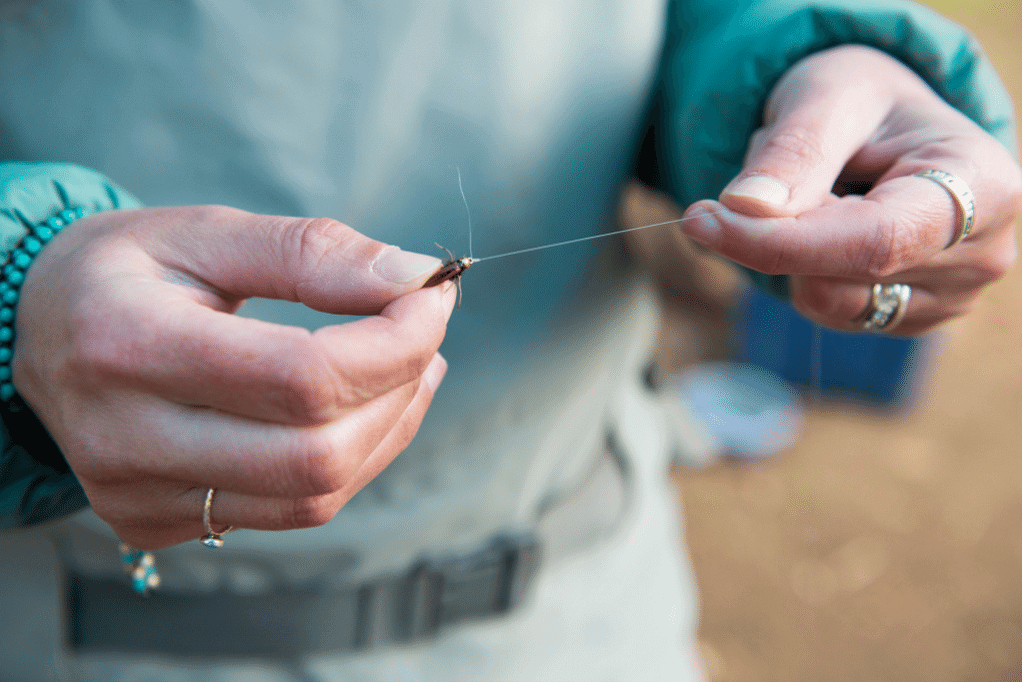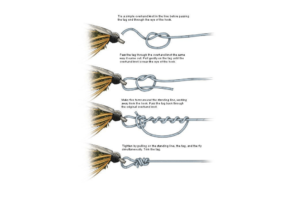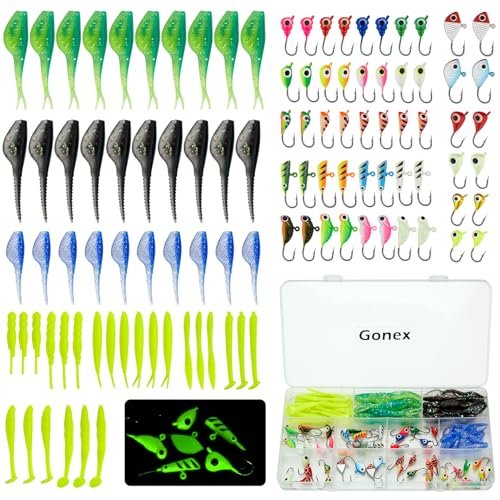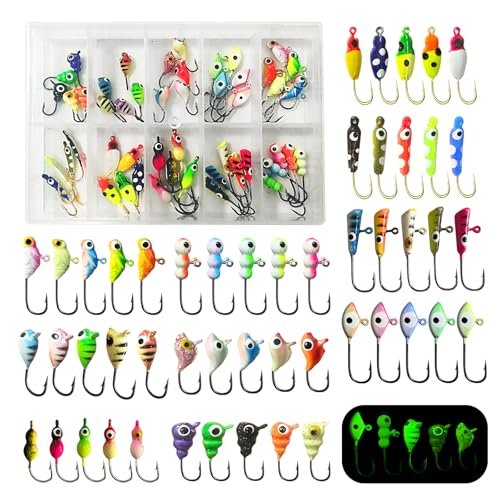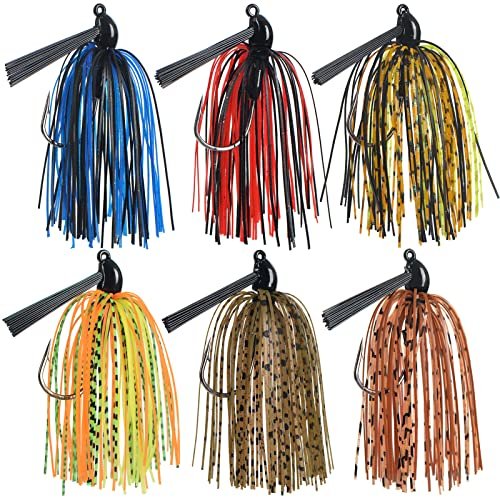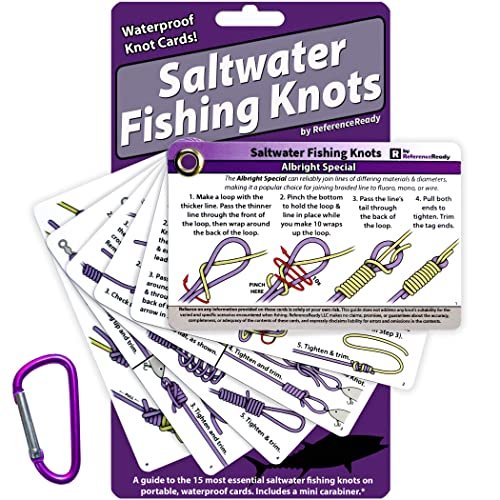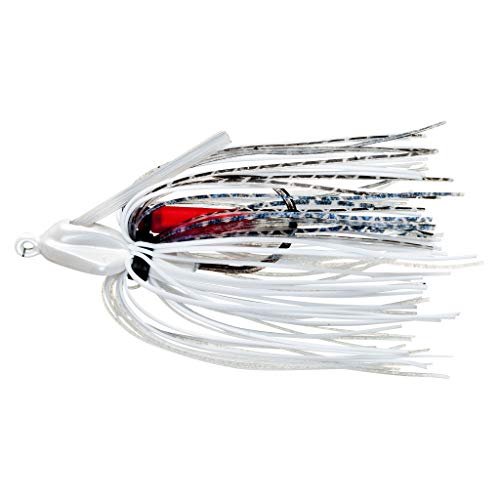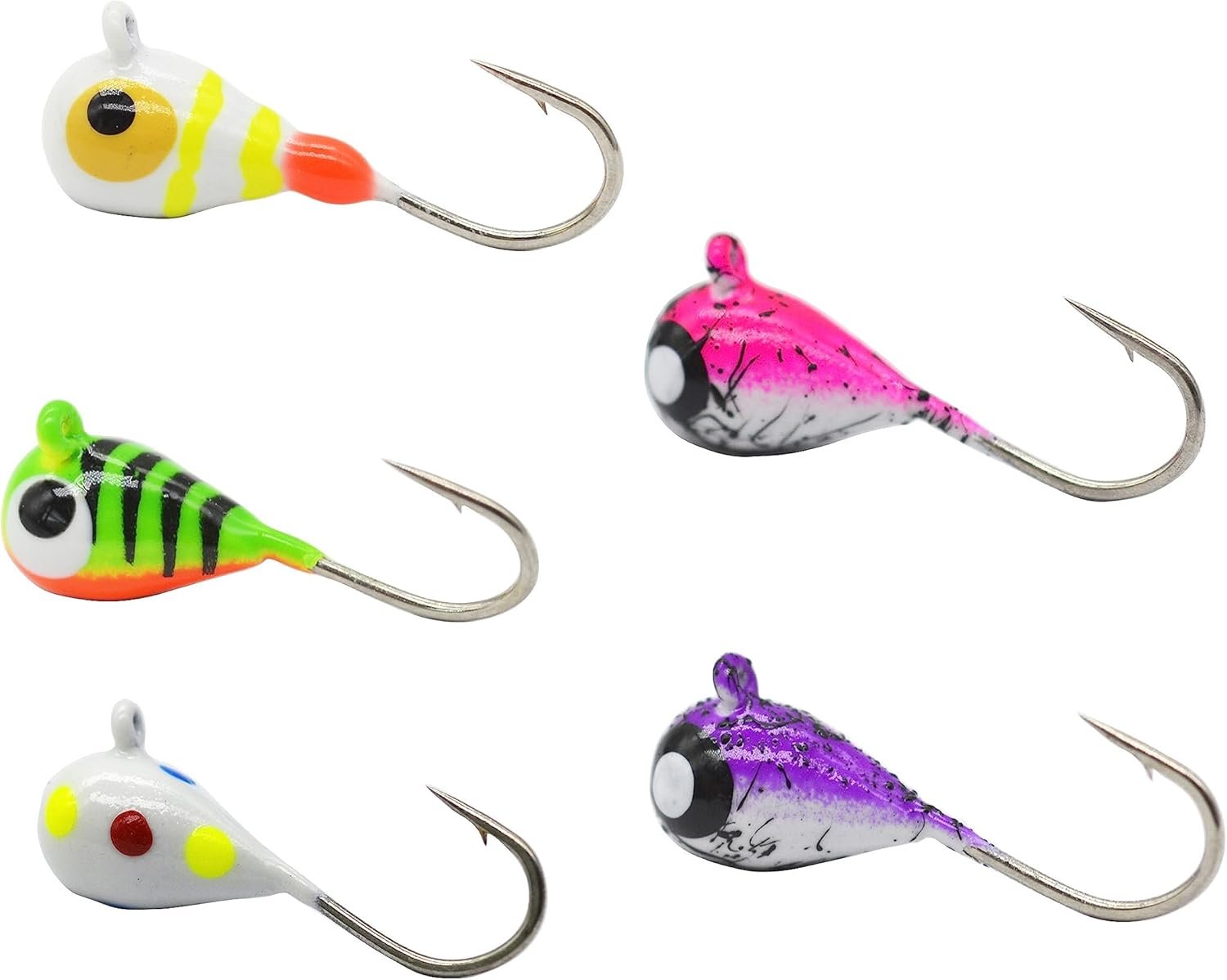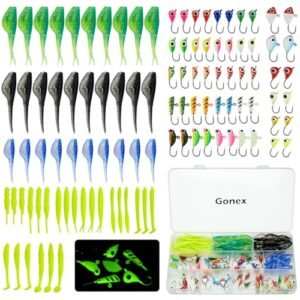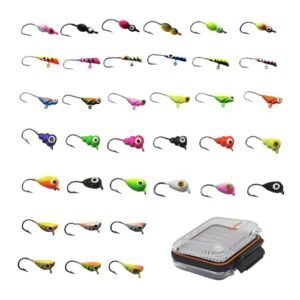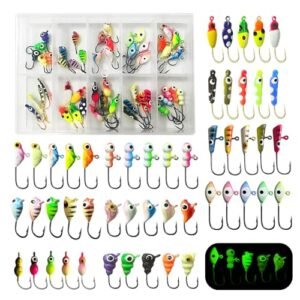Fly fishing requires specific knots to connect your line, leader, and tippet. These knots must be strong and reliable to handle the pressure of a catch. The improved clinch knot and the surgeon’s knot are two of the most commonly used in fly fishing.
They provide strength and ease of tying, making them favourites among anglers. Mastering these knots enhances your fishing experience, ensuring your gear stays intact. Always practice these knots to ensure efficiency and reliability during your fishing trips. Proper knot-tying skills can significantly impact your success in fly fishing.

The Art Of Fly Fishing Knots
Fly fishing is an exciting sport. It demands skill and patience. One of the most crucial aspects is knot tying. Understanding the art of fly fishing knots can make or break your fishing experience. This section delves into the essentials of fly fishing knots.
Why Knots Matter In Fly Fishing
Knots are the backbone of fly fishing. They link your line to the fly and other critical components. A well-tied knot ensures a strong connection. This prevents your line from snapping during a catch.
Fly fishing knots serve various purposes. They attach the fly to the line, join two lines, or create loops. Each knot has a specific role. Learning them enhances your fishing skills.
Bad knots can lead to frustration. They can cause missed catches and lost flies. Mastering knots is vital for a successful fishing trip.
Knot Characteristics For Optimal Performance
| Characteristic | Importance |
|---|---|
| Strength | A strong knot holds under pressure. It ensures your line stays intact during a catch. |
| Ease of Tying | An easy-to-tie knot saves time. It is crucial during active fishing. |
| Size | A smaller knot is less visible to fish. It increases your chances of a successful catch. |
| Durability | A durable knot withstands wear and tear. It lasts longer, reducing the need for retying. |
Using knots with these characteristics will improve your fly fishing experience. Practice these knots to ensure they are reliable.
Remember, the best knots are those you can tie quickly and securely. Experiment with different knots to find what works best for you.
Essential Tools For Tying Fly Fishing Knots
Fly fishing is an art. Tying the right knots is part of that art. Using the right tools makes this task easier. This section covers the essential tools you need.
Choosing The Right Equipment
Choosing the right equipment is crucial for tying fly fishing knots. Here are some key tools:
- Nippers: Use nippers to cut fishing lines cleanly.
- Forceps: These help in handling small hooks and knots.
- Knot Tying Tool: This tool makes knot tying faster and more precise.
- Fly Line Cleaner: Keeps your fly line in top condition.
Maintaining Your Gear
Maintaining your gear ensures it lasts longer and performs better. Here are some tips:
- Rinse your tools with fresh water after each use.
- Dry them thoroughly to prevent rust.
- Store them in a dry, cool place.
- Regularly check for wear and tear.
- Replace any worn-out tools promptly.
The Anatomy Of A Fly Fishing Knot
Fly fishing knots are crucial for every angler. They ensure the line stays secure and the catch doesn’t escape. Understanding the anatomy of these knots is essential for successful fly fishing.
Understanding Tension And Friction
Tension and friction are key elements of a strong knot. Tension refers to the force applied on the knot. It keeps the line taut. Friction prevents the knot from slipping. Both elements work together for a reliable knot.
Consider the following table for a quick overview:
| Element | Function |
|---|---|
| Tension | Keeps the line tight |
| Friction | Prevents slipping |
Each element affects the strength and durability of the knot. It is important to balance both for a secure knot.
The Role Of Knots In Line Management
Knots play a critical role in line management. They help attach various elements like hooks, lures, and leaders. Proper knots ensure smooth casting and reeling.
Here are some common knots and their uses:
- Improved Clinch Knot: Attaches the fly to the tippet.
- Arbor Knot: Secures the line to the reel.
- Surgeon’s Knot: Joins two lines of different diameters.
Using the right knot for each purpose ensures efficient line management. This improves your fly fishing experience.
The Improved Clinch Knot
The Improved Clinch Knot is a favourite among fly anglers. It is reliable and easy to tie. This knot is perfect for securing the fishing line to the hook. It is one of the most essential knots in fly fishing. Learn to tie this knot, and you’ll be better prepared for your fishing adventures.
Step-by-step Guide
- Thread the line through the eye of the hook.
- Wrap the tag end around the standing line 5-7 times.
- Pass the tag end through the loop near the hook eye.
- Bring the tag end back through the large loop you just created.
- Moisten the knot with water or saliva.
- Pull the tag end and standing line to tighten the knot.
- Trim any excess tag end close to the knot.
When To Use The Improved Clinch Knot
The Improved Clinch Knot is ideal for light to medium fishing lines. It works best with lines up to 20 pounds. Use this knot for securing flies to tippets and leaders. It is reliable in most freshwater and some saltwater fishing scenarios.
| Line Type | Best Use |
|---|---|
| Nylon Monofilament | Light to Medium Lines |
| Fluorocarbon | Medium Lines |
| Braid | Not Recommended |
Remember, the Improved Clinch Knot shines in various fishing situations. Mastering this knot can enhance your fly fishing experience. Always practice tying the knot before heading out on your fishing trip. Confidence in your knots can make your fishing more enjoyable and successful.
The Palomar Knot
The Palomar Knot is an essential skill for any fly fishing enthusiast. This knot is known for its strength and simplicity. Anglers often rely on it to secure their hooks, lures, or swivels. Understanding how to tie the Palomar Knot can significantly enhance your fishing experience.
How To Master The Palomar Knot
Mastering the Palomar Knot is easier than you might think. Follow these steps for a reliable and strong knot:
- Double about six inches of your fishing line.
- Pass the loop through the eye of the hook.
- Tie an overhand knot with the doubled line.
- Ensure the hook hangs loose in the loop.
- Pass the loop over the hook.
- Moisten the knot and pull both ends to tighten.
Practice these steps until you can tie the Palomar Knot quickly and efficiently.
Advantages Of The Palomar Knot
The Palomar Knot offers several benefits for fly fishing enthusiasts:
- Strong and Reliable: The knot maintains a high breaking strength.
- Simple to Tie: Easy to learn and perfect for beginners.
- Versatile: Works well with various types of fishing lines.
- Efficient: Quick to tie, saving you valuable fishing time.
These advantages make the Palomar Knot a favourite among anglers.
| Feature | Benefit |
|---|---|
| Strength | High breaking strength, ensuring your catch stays secure. |
| Simplicity | Easy to learn and quick to tie. |
| Versatility | Suitable for various types of fishing lines. |
| Efficiency | Saves time while fishing. |
The Surgeon’s Knot
The Surgeon’s Knot is a crucial knot for fly fishing enthusiasts. It is known for its strength and reliability. This knot is often used to join lines of different diameters. It is quick and easy to tie, making it a favourite among anglers.
Tying The Surgeon’s Knot For Strength
To ensure the Surgeon’s Knot is strong, follow these steps:
- Overlap the ends of the two lines to be joined.
- Form a loop by crossing one end over the other.
- Pass the ends through the loop twice.
- Moisten the knot and pull tight.
- Trim the excess line close to the knot.
These steps ensure a secure and durable knot.
Surgeon’s Knot Variations
There are several variations of the Surgeon’s Knot. Each serves a different purpose in fly fishing.
- Double Surgeon’s Knot: This version adds extra strength. Follow the same steps but pass the ends through the loop three times.
- Triple Surgeon’s Knot: This is used for even greater strength. Pass the ends through the loop four times.
- Surgeon’s Loop: This creates a loop at the end of a line. It is useful for attaching leaders or droppers.
| Variation | Strength | Use Case |
|---|---|---|
| Double Surgeon’s Knot | High | Joining lines |
| Triple Surgeon’s Knot | Very High | Joining thicker lines |
| Surgeon’s Loop | Moderate | Creating loops |
The Blood Knot
The Blood Knot is a popular knot in fly fishing. It helps connect two pieces of fishing line. This knot is strong and reliable. It is used by anglers worldwide. Learning the Blood Knot can improve your fishing success.
Connecting Lines With The Blood Knot
Connecting lines with the Blood Knot is simple. Follow these steps:
- Overlap the ends of two lines.
- Wrap one line around the other five times.
- Do the same with the other line.
- Thread each tag end through the center loop.
- Pull both lines to tighten the knot.
Ensure the wraps are tight. The knot should look neat. A well-tied Blood Knot will not slip. It will help you catch more fish.
Troubleshooting Common Blood Knot Issues
Sometimes, the Blood Knot can cause problems. Here are common issues and solutions:
- Slipping Knot: Ensure you pull tight. Check if the wraps are even.
- Weak Knot: Use lines of similar thickness. Different sizes can weaken the knot.
- Frayed Ends: Trim the ends neatly. Frayed ends can cause the knot to fail.
Practice tying the Blood Knot. With time, you will tie it quickly and correctly. This will make your fishing trips more successful.
The Nail Knot
The Nail Knot is a must-know for any fly angler. This knot connects your leader to the fly line. It is known for its strength and reliability. The Nail Knot ensures a smooth transition from leader to line. This helps in better casting and presentation of the fly.
Securing Leader To Line With The Nail Knot
To secure the leader to the line using a Nail Knot, follow these steps:
- Place a nail or small tube alongside the fly line.
- Lay the leader over the nail and fly line.
- Wrap the leader around the nail and fly line six times.
- Thread the end of the leader through the loops formed.
- Carefully slide the wraps off the nail and tighten.
The Nail Knot creates a compact and strong connection. It is perfect for smooth line flow through the guides.
Nail Knot Tools And Tricks
Using the right tools can make tying the Nail Knot easier. Here are some useful tools and tricks:
- Nail Knot Tool: A small tool designed to help tie the knot quickly and easily.
- Small Tube or Straw: Acts as a guide for wrapping the leader around the fly line.
- Practice: Regular practice helps perfect the knot-tying technique.
Here’s a quick comparison of tools:
| Tool | Ease of Use | Cost |
|---|---|---|
| Nail Knot Tool | Easy | Moderate |
| Small Tube or Straw | Moderate | Low |
Using these tools and tips, you can tie a perfect Nail Knot every time.
The Loop Knot
The Loop Knot is a vital knot in fly fishing. It creates a loop at the end of your line. This loop is essential for attaching lures and flies. Let’s explore its creation and applications.
Creating Loops For Lures And Flies
Creating loops for lures and flies is simple. Here are the steps:
- Make an overhand knot in the line.
- Pass the tag end through the eye of the hook or lure.
- Return the tag end through the original overhand knot.
- Tighten the knot by pulling both ends.
This method keeps the lure and fly free-moving. Fish find it more attractive.
Loop Knot Strength And Applications
The strength of the Loop Knot is impressive. It holds up under pressure. This makes it ideal for various fishing situations.
| Application | Benefits |
|---|---|
| Attaching lures | Keeps lures moving naturally |
| Securing flies | Ensures flies drift freely |
| Fishing in currents | Maintains knot strength |
The Loop Knot is versatile. It works well in freshwater and saltwater. Anglers trust it for its reliability.
Advanced Fly Fishing Knots
Fly fishing is a rewarding sport that requires skill and precision. Mastering the basic knots is essential for any angler. But to elevate your game, you need to learn advanced fly fishing knots. These knots provide better performance and flexibility in various fishing scenarios. Let’s dive into two of the most important advanced knots: the Albright Knot and the Perfection Loop.
Exploring The Albright Knot
The Albright Knot is known for its strength and versatility. It is primarily used to join two lines of different diameters. This knot is perfect for connecting a fly line to a leader. Follow these steps to tie the Albright Knot:
- Make a loop in the thicker line.
- Pass the thinner line through the loop.
- Wrap the thinner line around itself and the loop 10 times.
- Pass the end of the thinner line back through the loop.
- Moisten the knot and pull both ends to tighten.
Here is a table summarizing the pros and cons of the Albright Knot:
| Pros | Cons |
|---|---|
| Strong | Can be bulky |
| Versatile | Requires practice |
The Perfection Loop For Quick Changes
The Perfection Loop is an essential knot for fly fishing. It allows for quick and easy changes of leaders and tippets. The loop created is strong and reliable. Follow these steps to tie the Perfection Loop:
- Create a small loop at the end of the line.
- Make a second loop by wrapping the tag end around the standing line.
- Pass the tag end between the two loops.
- Hold the tag end and pull the standing line to tighten.
- Trim the excess tag end.
Below are the benefits and drawbacks of the Perfection Loop:
- Pros: Easy to tie, quick changes, strong loop.
- Cons: Slightly less strong than some other knots.
Mastering these advanced fly fishing knots will enhance your fishing experience. Practice them until you can tie them quickly and confidently. Happy fishing!
Knot Care And Maintenance
Proper care and maintenance of your fly fishing knots are crucial. Well-maintained knots ensure a successful fishing trip. Neglecting knot care can lead to knot failure and lost catches.
Preventing Knot Failure
Preventing knot failure is essential for a successful fishing trip. Here are some tips to keep your knots strong and reliable:
- Use high-quality fishing line: A good quality line reduces the chances of knot failure.
- Moisten knots before tightening: Wetting the line helps it slide smoothly and reduces friction.
- Tighten knots slowly and steadily: Apply even pressure to avoid weakening the knot.
- Avoid overloading the line: Do not exceed the line’s weight capacity.
Inspecting And Re-tying Knots
Regular inspection and re-tying of knots are crucial for maintaining their strength. Follow these steps to ensure your knots are in top condition:
- Check knots before each fishing trip: Inspect all knots for signs of wear or damage.
- Look for frayed or damaged line: Replace the line if you find any issues.
- Re-tie knots after catching a fish: Fish can put a lot of strain on your knots. Re-tie them to ensure they remain strong.
- Re-tie knots after snagging: Snags can weaken your knots. Re-tie them to maintain their strength.
By following these tips, you can keep your fly fishing knots in excellent condition, ensuring a more successful and enjoyable fishing experience.
Practical Exercises For Knot Tying Mastery
Mastering fly fishing knots requires practice and patience. Practical exercises can help you become proficient. These exercises focus on speed, efficiency, and muscle memory. Let’s dive into some effective drills.
Drills For Speed And Efficiency
Speed and efficiency are crucial for knot tying. The following drills will enhance these skills:
- Timed Sessions: Set a timer for 5 minutes. Tie as many knots as possible. Track your progress daily.
- Variety Drills: Practice different knots in one session. This builds versatility and adaptability.
- Simulated Conditions: Tie knots in various conditions. Try cold, wet, or windy environments to simulate real fishing scenarios.
Building Muscle Memory For Knot Tying
Muscle memory is key for knot tying. Repetition and consistency are essential. Here are some exercises to build muscle memory:
- Daily Practice: Spend 10 minutes each day tying knots. Consistent practice makes your fingers memorize movements.
- Step-by-Step Repetition: Break down the knot into steps. Repeat each step until it becomes second nature.
- Blindfold Practice: Tie knots without looking. This sharpens your tactile skills and enhances muscle memory.
Frequently Asked Questions
What Is The Most Popular Fly Fishing Knot?
The most popular fly fishing knot is the Improved Clinch Knot. It’s reliable, easy to tie, and strong.
What Knots Do You Need To Know For Fly Fishing?
You need to know these knots for fly fishing: Improved Clinch Knot, Surgeon’s Knot, Blood Knot, Perfection Loop, and Albright Knot.
What Is The Best Knot For Fly To Tippet?
The best knot for attaching fly to tippet is the improved clinch knot. It is strong and reliable.
What Is The Best Knot For Leader To Fly Line?
The best knot for attaching a leader to fly line is the Nail Knot. It’s strong, reliable, and easy to tie.
Conclusion
Mastering fly fishing knots enhances your fishing experience. Practice these knots to ensure a successful day on the water. Remember, the right knot can make all the difference. Happy fishing and tight lines!

